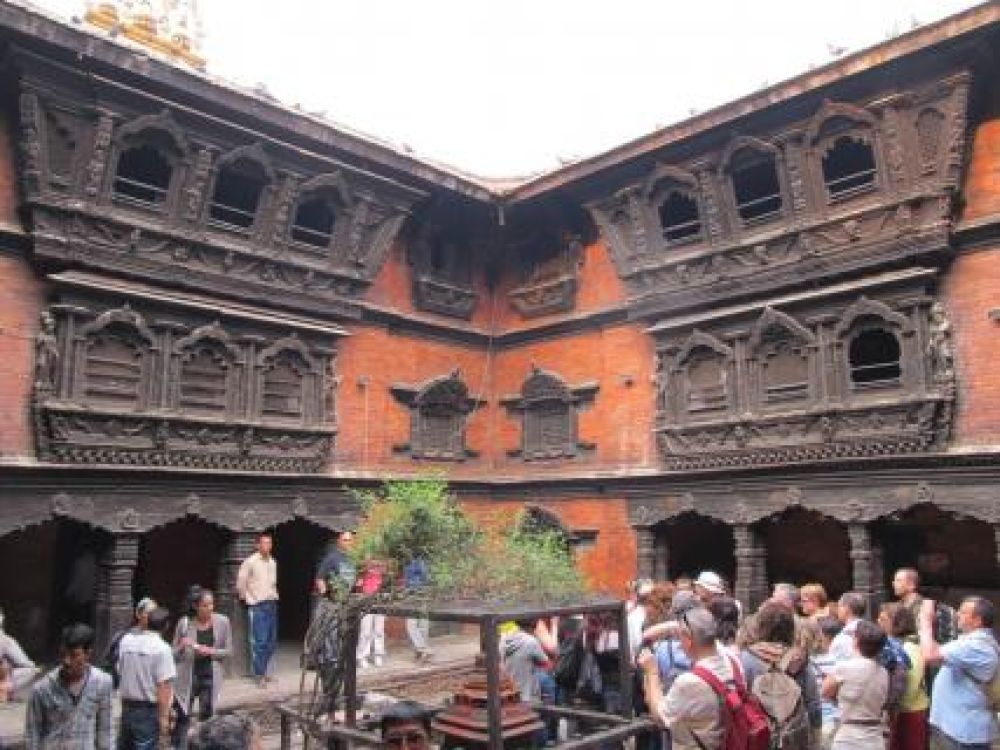

Nestled in the heart of Kathmandu, within the regal confines of the Hanuman Dhoka Palace Complex, lies Kumari Chowk, or Kumari Ghar — the residence of the Living Goddess, Kumari. The history of tourism in this enigmatic destination is deeply intertwined with the cultural and religious fabric of Nepal, drawing visitors from across the globe to catch a glimpse of the elusive Kumari.
Tourism in Kumari Chowk can be traced back to the early days of travel in Nepal, when the country opened its doors to outsiders in the 1950s. Enthusiasts of culture, history, and spirituality ventured into Nepal, entranced by its vibrant traditions and historical sites. As the throne of the Living Goddess, a young girl selected through an ancient and rigorous process, Kumari Chowk has always been a focal point of cultural tourism in Kathmandu.
The Living Goddess tradition is central to Newar Buddhism and is a perfect example of the synthesis between Buddhism and Hinduism in Nepal. This unique blend of cultures and religions became a magnetic pull for tourists seeking authentic and transformative experiences. The ornately decorated courtyard and the beautifully carved windows of Kumari Ghar are exquisite examples of Nepalese craftsmanship, which have captivated visitors for decades.
In recent years, tourism at Kumari Chowk has evolved due to the advancement in global travel trends and the growing emphasis on sustainable tourism. Visitors are not only interested in witnessing the Living Goddess but also in understanding her role and significance in Nepalese culture. There has been a rise in cultural tours that provide deep insights into the local traditions, ethical practices, and the impact of tourism on the resident deity's life.
The incorporation of digital technology has also provided new dimensions to the tourist experience in Kathmandu. Virtual reality experiences, online video tours, and social media have played pivotal roles in increasing interest and awareness of Kumari Chowk's historical and cultural significance.
Tourism has been a substantial and important economic driver for Kathmandu, but it has also led to concerns regarding the preservation of the site's authenticity and the well-being of the Living Goddess. As such, efforts have been made to regulate and balance visitor access with respect and sensitivity to the cultural practices that are central to the deity's life and the community of Kathmandu.
Responsible tourism initiatives aim to educate tourists on the respect and etiquette required when visiting sacred sites, while at the same time ensuring the local community, especially the young Kumari, are not adversely affected by the influx of tourists.
Looking to the future, Kumari Chowk is poised to continue as a beacon of cultural tourism in Nepal. Efforts to preserve its historical and cultural integrity, while adapting to changing tourist demands and advocating for responsible tourism practices, will undoubtedly shape the visitor experience in positive ways. As long as the fascination with the mysteries and traditions of Nepal endures, so too will the allure of Kumari Chowk and its Living Goddess.